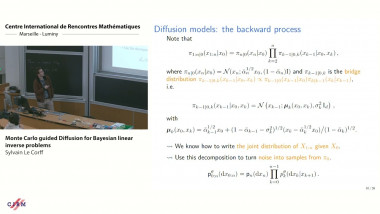Appears in collection : Adaptive and High-Dimensional Spatio-Temporal Methods for Forecasting / Méthodes spatio-temporelles adaptatives et en grande dimension pour la prédiction
Multivariate extreme value distributions are a common choice for modelling multivariate extremes. In high dimensions, however, the construction of flexible and parsimonious models is challenging. We propose to combine bivariate extreme value distributions into a Markov random field with respect to a tree. Although in general not an extreme value distribution itself, this Markov tree is attracted by a multivariate extreme value distribution. The latter serves as a tree-based approximation to an unknown extreme value distribution with the given bivariate distributions as margins. Given data, we learn an appropriate tree structure by Prim's algorithm with estimated pairwise upper tail dependence coefficients or Kendall's tau values as edge weights. The distributions of pairs of connected variables can be fitted in various ways. The resulting tree-structured extreme value distribution allows for inference on rare event probabilities, as illustrated on river discharge data from the upper Danube basin.
















